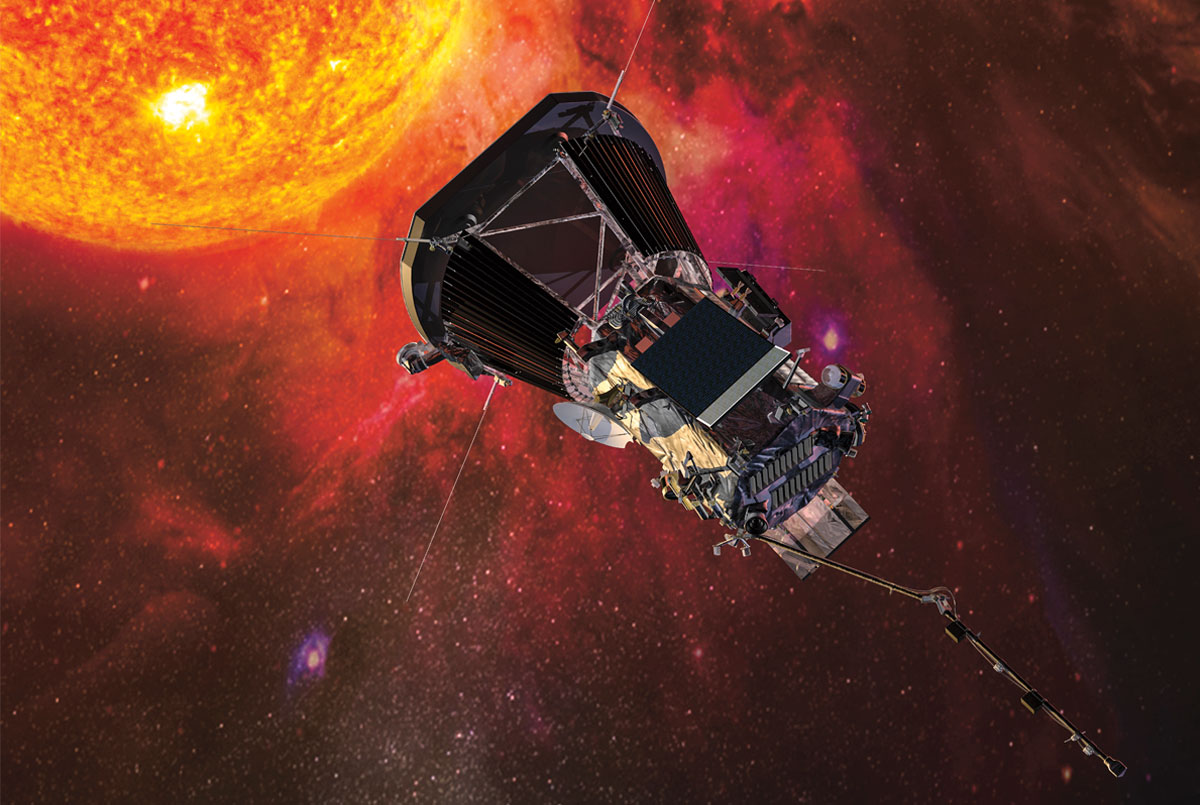Mission to the Sun!

The probe, as shown in this artist’s rendering, will accelerate to 430,000 miles per hour.

NASA’s latest mission aims to shed some light on the sun. The U.S. space agency announced that it will send an unmanned spacecraft to our closest star—a first for space exploration.
The Parker Solar Probe will launch next summer. The spacecraft will journey about 90 million miles, eventually flying within 4 million miles of the sun.
24
Number of orbits the probe
will make around the sun.
The probe will study the sun from the outermost part of the star’s atmosphere, called the corona. The spacecraft will be equipped with a high-tech heat shield to protect it from the region’s searing 2,500-degree-Fahrenheit temperatures.
Scientists say the mission could provide new insight into the sun. They also hope to learn more about solar storms—eruptions from the sun that send charged particles streaming through the solar system.
Solar storms can disable satellites and shut down electrical grids on Earth. A bad storm could black out the entire East Coast of the United States. Experts want to have a better understanding of them so they can warn people when one is coming.
“The probability of a major storm in the next 100 years is high,” says Edward Guinan, a professor at Villanova University in Pennsylvania. “And the amount of damage would be very costly.”
